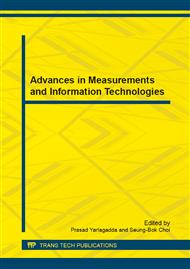p.813
p.818
p.823
p.827
p.832
p.841
p.846
p.851
p.855
User Preference Based Spatial Skyline Query Method
Abstract:
With the increasing of data volume and data dimensions in road network query, the response gets slow in searching services, which cannot satisfy users demand for preference-based searching. This paper proposes a user preference-based Skyline query algorithm. At the first stage, this method is based on the fact that the static property of data does not change during the query processes. Therefore, Skyline starts its calculation in the non-spatial data set to have the candidate results and dominance relation. Then it calculates the total costs of routine by defining user preference function. At the second stage, compare the data connections with the total costs of preference to minimize time for processing data and searching. The experiment result shows that the definition of user preference meets the users demand, and Skyline query algorithm benefits to have quick response.
Info:
Periodical:
Pages:
832-838
Citation:
Online since:
February 2014
Authors:
Keywords:
Price:
Сopyright:
© 2014 Trans Tech Publications Ltd. All Rights Reserved
Share:
Citation:


